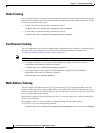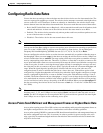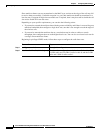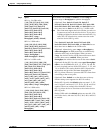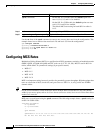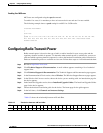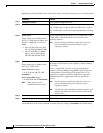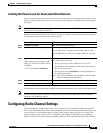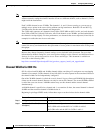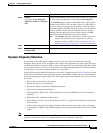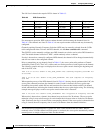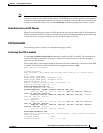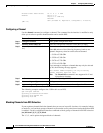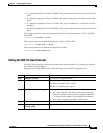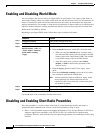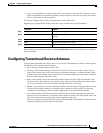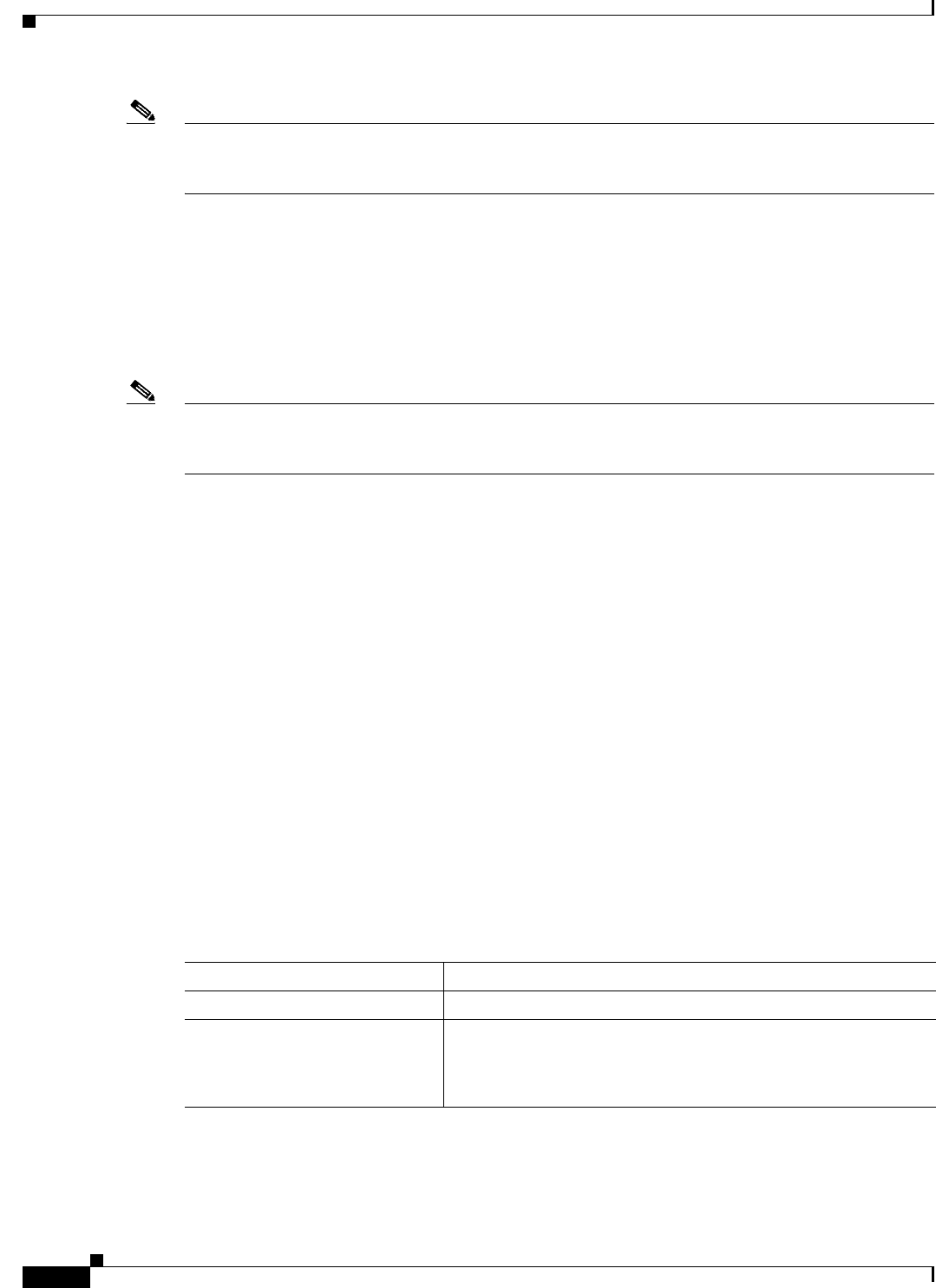
6-16
Cisco IOS Software Configuration Guide for Cisco Aironet Access Points
OL-30644-01
Chapter 6 Configuring Radio Settings
Configuring Radio Channel Settings
Note In places where RF interference might be causing clients to occasionally get disconnected from the
wireless network, setting the wireless interface to run on a different channel, such as channel 1 (2412),
might avoid the interference.
Each 2.4-GHz channel covers 22 MHz. The channels 1, 6, and 11 do not overlap, so you can set up
multiple access points in the same vicinity without causing interference. Both 802.11b and 802.11g
2.4-GHz radios use the same channels and frequencies.
The 5-GHz radio operates on 9 channels from 5180 to 55825 MHz on 802.11n APs, and on 8 channels
from 5180 to 5805 on 1140 and 1240 series APs. Each channel covers 20 MHz, and the bandwidth for
the channels overlaps slightly. For best performance, use channels that are not adjacent (44 and 46, for
example) for radios that are close to each other.
Note Too many access points in the same vicinity creates radio congestion that can reduce throughput. A
careful site survey can determine the best placement of access points for maximum radio coverage and
throughput.
Because they change frequently, channel settings are not included in this document. For up-to-date
information on channel settings for your access point or bridge, see the Channels and Maximum Power
Settings for Cisco Aironet Autonomous Access Points and Bridges. This document is available on
cisco.com at the following URL:
http://cisco.com/en/US/products/ps6521/tsd_products_support_install_and_upgrade.html
Channel Widths for 802.11n
802.11n allows both 20-MHz and 40-Mhz channel widths consisting of 2 contiguous non-overlapping
channels (for example, 5-GHz channels 36 and 40). 802.11n radios operate in the same band. However
the channel widths can be independently configured.
One of the 20-MHz channels is called the control channel. Legacy clients and 20-MHz high throughput
clients use the control channel. Beacons can only be sent on this channel. The second 20-MHz channel
is called the extension channel. 40-MHz stations may use this channel and the control channel
simultaneously.
A 40-MHz channel is specified as a channel and -1 as extension. So here, the control channel is channel
40-MHz and the extension channel is 36-Mhz below it.
Beginning in privileged EXEC mode, follow these steps to set the wireless device channel width:
Command Purpose
Step 1
configure terminal Enter global configuration mode.
Step 2
interface dot11radio {0 |
1slot/port}
Enter interface configuration mode for the radio interface.
The 2.4-GHz radio and the 802.11n 2.4-GHz is radio 0.
The 5-GHz radio and the 802.11n 5-GHz is radio 1.



